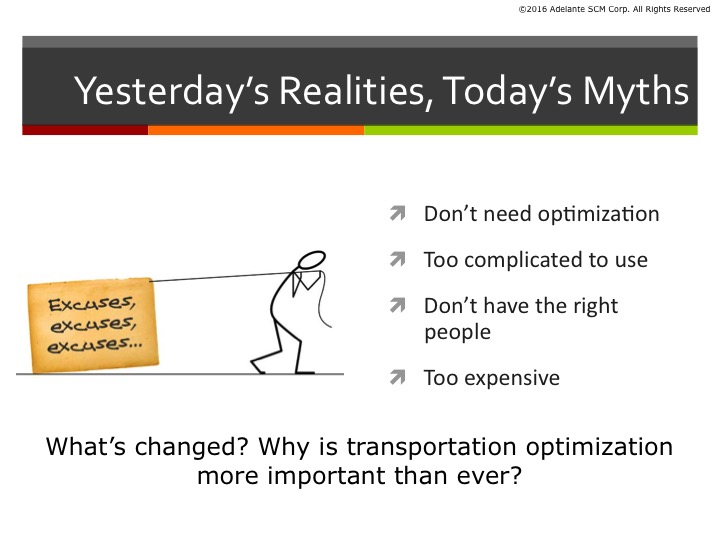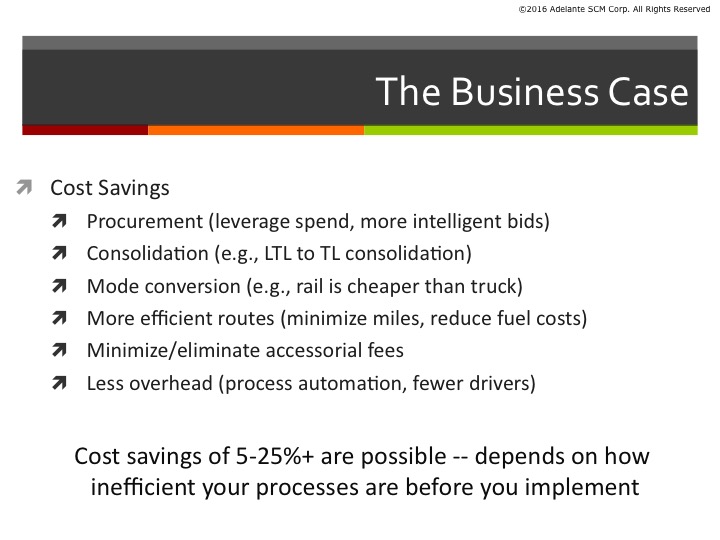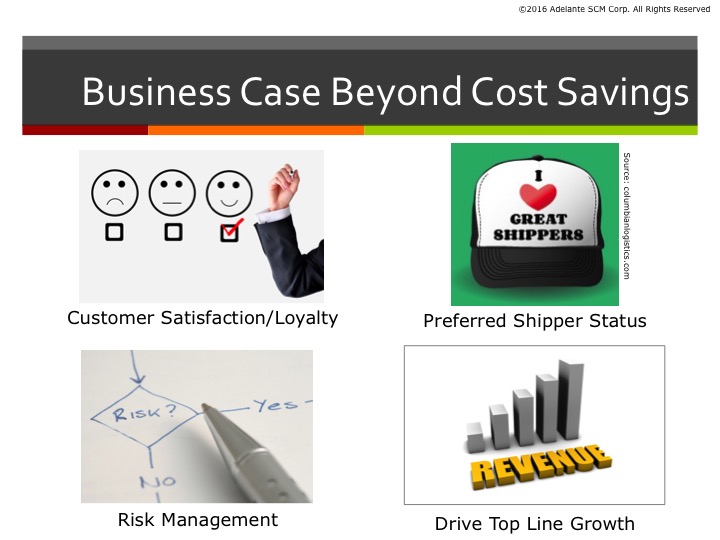Author’s Note: The following is the forward I wrote for a new textbook published by MercuryGate (a Talking Logistics sponsor) on “Modern Technology for Transportation Optimization,” which is available for purchase on Amazon.com.
The word “optimization” is ubiquitous in the supply chain and logistics industry. “You have to optimize your [transportation, inventory, manufacturing, or other business process] to maximize your costs savings and benefits,” is what industry analysts, consultants, academics, and solution providers have been preaching for decades. But what does that mean exactly? And if optimization technology is so beneficial, why aren’t more companies leveraging it after all these years?
As an engineering student back in college, I remember feeling intimidated whenever I saw the pi symbol in an equation. “Don’t be afraid of pi,” my good friend Kevin once told me while we were doing our homework together, “it’s just a number.”
In many ways, I believe many supply chain and logistics professionals are intimidated by optimization. They see or hear optimization and they equate it with added complexity. “Don’t be afraid of optimization,” I tell them, “it’s just a word.”
A word that according Merriam-Webster means “to make as perfect, effective, or functional as possible.”
When I speak with transportation executives, they tell me that the biggest challenge they face today is keeping pace with the rapid pace of change — whether it’s the rise of e-commerce and omni-channel fulfillment, with consumers expecting faster and cheaper deliveries; or it’s the growing need to manage shipments across multiple modes and geographies; or it’s having to respond more effectively to supply chain risks and disruptions; or it’s staying informed of new regulations and how they might impact capacity and rates.
“We need the ability to make smarter decisions faster,” is what shippers and logistics service providers tell me. They might not realize it, but what they’re really saying is that they need optimization.
If the need to make smarter decisions faster — that is, the need for optimization — is greater than ever before, then why are so many companies still using spreadsheets, whiteboards, or nothing at all to plan and analyze their transportation operations?
“We don’t need optimization,” is the most common reason I hear from shippers and LSPs, especially small and mid-sized firms. “Our transportation operations are simple and straightforward.” While this may be true for some (but a shrinking number of) companies, it doesn’t take much added complexity — whether it’s an increase in orders, shipping locations, destinations, or modes — before shippers start leaving money and other benefits on the table by not using optimization technology.
For example, in a recent exercise I conducted with MIT students, they were given a relatively simple transportation problem to solve using a spreadsheet: fulfill two orders for t-shirts, with two destinations, three potential ship-from locations, and a single truck carrier with a flat rate. Out of about 10 students teams, only two teams came up with the lowest-cost solution, meaning most teams were overpaying to deliver the t-shirts. While the cost difference was not large in some cases, when you multiply it by the number of shipments a company executes every day, every week, and every year, the money adds up quickly.
“Optimization solutions are too complicated to use,” is another common excuse, along with “We don’t have the right resources to use these tools effectively.” These perceptions were realities in the past, but thanks to advancements in software architecture and user interfaces, optimization solutions are much easier to configure and use today than in the past. Simply put, you don’t need a Ph.D. in mathematics or operations research to implement and use an optimization solution today; what you need is a good understanding of your transportation process flows and constraints and how they relate to other supply chain processes, as well as the ability to ask smart and important “What if?” questions.
Another misperception is that optimization solutions are too expensive to implement. Again, while cost might have been a barrier for some companies in the past, today’s optimization solutions — thanks to cloud computing and software-as-a-service — are much more affordable.
In short, many companies still have an outdated perception and understanding of optimization, especially in transportation management. The scope of transportation optimization goes beyond load consolidation — that is, aggregating less-than-truckload shipments into truckload shipments; it also plays an important role in procurement, zone skipping, mode conversion, what-if analysis, and various other applications outlined in this book.
And the business case for optimization goes well beyond cost savings too, although the opportunity to save 5 to 25 percent or more on transportation spend is certainly the most motivating factor. Progressive companies no longer view transportation as just a cost center; they view it as a competitive weapon to drive top-line growth, enhance customer loyalty, and increase market share. They look for ways to better align their transportation networks with those of their carriers, which creates more win-win opportunities and makes them “preferred shippers” in the eyes of carriers. And they also take a more proactive approach to supply chain risk management and continuous improvement by modeling, simulating and analyzing different “what-if” scenarios in order to find new opportunities to streamline and improve processes, and to respond more quickly and effectively to supply chain disruptions. The business case for optimization encompasses all of this and more.
Remember, optimization is just a word, so don’t fear it, and don’t let misconceptions about it get in the way of helping you make smarter decisions faster. May this book broaden your understanding of transportation optimization, and may it spark new ideas and opportunities to help you make your transportation operations as effective and functional as possible.













